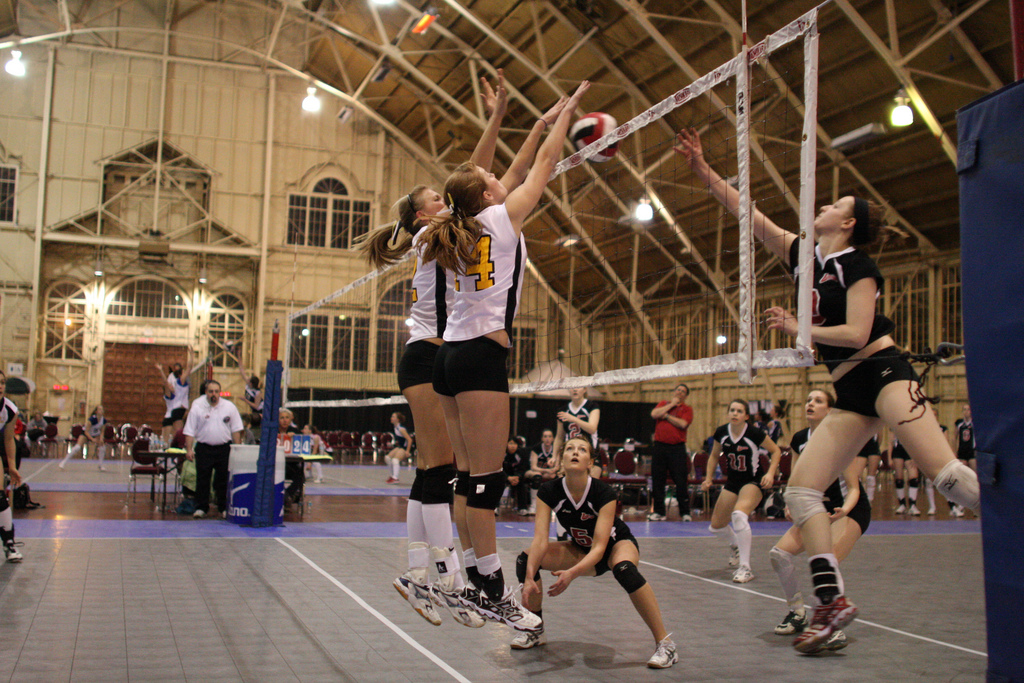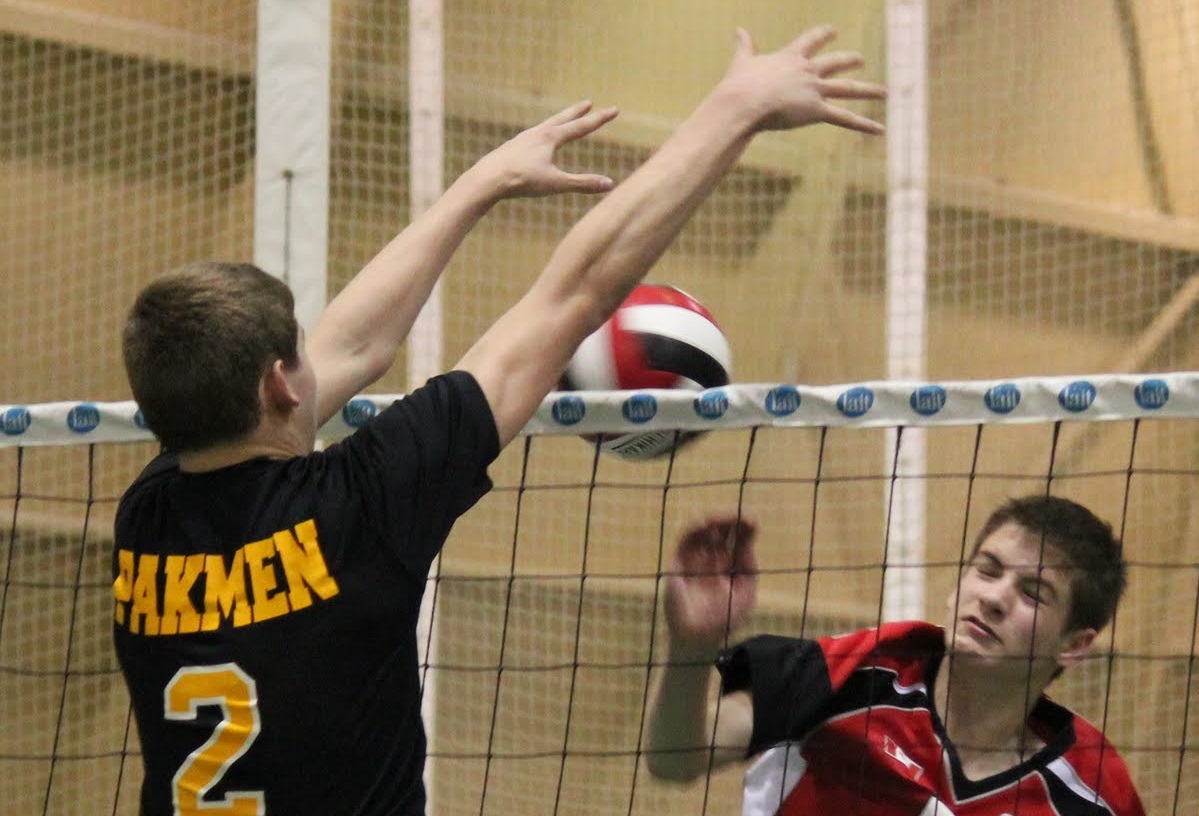It’s no surprise that defense in the sport of volleyball depends on blocking so much. However, it’s important to know that a lot of volleyball players find it hard to learn volleyball blocking skills. Positioning, timing as well as movement are considered to be 3 key ingredients for successful volleyball blocking. In other words, if you want to become an effective volleyball blocker then you should be able to choose the right moment for volleyball blocking and take the appropriate position on the court quickly. On the other hand, it’s crucial for a volleyball player to move correctly while blocking an attack hit. In this blog, we are going to provide readers with tips for learning volleyball blocking techniques and developing volleyball skills.
Tips to Help Volleyball Players Prepare for Blocking
When preparing for blocking, volleyball players have to position their arms as well as hands properly. Moreover, it’s crucial for a volleyball blocker to know how to block the attack successfully and direct the ball to the opposite side of the court. As you can see, volleyball blocking is not easy as it may seem. Read on to find out how to prepare for a successful volleyball block.
Positioning arms and hands for volleyball blocking properly. It’s incredibly important for a volleyball blocker to take the correct arm and hand position before blocking. The reality is volley players oftentimes choose to swing their arms towards the net during blocking. However, you need to know that it’s a big mistake. Keep in mind that you’ll make a block much harder by swinging your arms.
In fact, it’s best for you to straighten your arms before blocking. On the other hand, you need to make sure that your arms are not pointed straight up. When blocking attacks of the opponent team you obviously should do everything that you can to bring your arms to the other side of the court. This will certainly help you succeed in blocking.
Some blockers choose to jump as high as possible when making attempts to resist an attack hit of the opponent’s team. Nevertheless, such approach doesn’t always work well. When a volleyball blocker reaches high, an attacker can easily hit the ball over him or her. Actually, these kinds of things happen with blockers all the time. So, as a blocker you need to do everything you can to prevent such situations from happening. One of the best ways to do this is to penetrate the net. If you penetrate into the other side, an attacker will not be able to hit the ball around you easily.
It’s important to point out that penetrating into the opponent’s side of the court during the volleyball blocking delivers multiple important benefits to blockers. You need to know that if you penetrate into the other side while blocking an attack of the opponent team you’ll be able to direct the ball straight down to the other side easily. Another big advantage of penetrating into the other side of the court during blocking is that you’ll be able to get closer for an attacker of the opponent’s team. Obviously, the closer you are to a hitter of an opponent team – the better. By penetrating into the other side you’ll be able to cover your own court. Therefore, an opponent team’s attacker will have small area and to hit the ball into your side. Without a doubt, the opponent team’s attacker will find it hard to carry out a successful attack hit.
Moreover, you should do your best to put your hands close to the ball. By doing so, you’ll be able to block the ball successfully. Try to block the ball as far as possible to the opposite side of the court. There is no doubt that positioning arms and hands properly will definitely help you block the spike successfully.
Positioning fingers for volleyball blocking properly. When blocking the ball you also need to pay a close attention to your fingers. Make sure that your fingers are spread as wide as possible. By doing this, you’ll be able to cover more area. In addition, you’ll be able to make your fingers much stronger that is very crucial for successful blocking.
On the other hand, your fingers must not be very tight when you are attempting to block attacks of the opponent’s team. It’s important to note that extremely tight fingers oftentimes lead to injuries during the game. That’s why it’s not a good idea for a volleyball player to tighten up fingers during blocking. Remember, the moderation is the key when it comes to tightening up fingers for blocking during the game of volleyball.
Positioning wrists for volleyball blocking properly. Your wrists must be positioned correctly during blocking as well. It’s worth noting that blockers usually find it hard to resist hard spikes during the game. That’s why those volleyball players who are responsible for blocking attacks should constantly work on strengthening their wrists. Also, it’s important for such volleyball players to keep their wrists rigid when resisting hard attacks.
Positioning shoulders for blocking properly. Shoulders also play a big role in volleyball blocking. You need to know that strong and solid shoulders will help you block even very strong spikes effectively. That means that if you want to become a good blocker you should do your best to strengthen your shoulders. Of course, exercises for strengthening shoulders have to be a key part of volleyball blocker’s program.
Tips on How to Choose the Right Moment for Blocking in Volleyball
As previously mentioned, timing is very crucial for a successful volleyball block. It goes without saying that a good volleyball blocker should be able to choose the right moment for resisting attack hits of the opposite team. If you have an ability to find the best moment for blocking in advance you’ll be able to prepare for a volleyball block properly.
How to figure out when it’s time for blocking? Actually, it’s the question faced by so many experienced volleyball blockers as well as volleyball players who have started learning volleyball blocking techniques recently. Below, we’ll provide you with the answer to this interesting question.
There is no question that attackers as well as setters of the opponent teams must be constantly under blocker’s watch. That means that a volleyball blocker needs to know when attackers as well as setters are located on the court. An effective volleyball blocker can find it easy to predict where a setter is likely to set the ball and when an attacker is likely to carry out an attack hit.
Of course, this will make it easy for a blocker to figure out when it’s time to block opponent’s team attacks. All of that means that watching an opponent team’s setter as well as hitter is crucial to successful volleyball blocking.
Why Good Communication Is So Important for Volleyball Blockers
There has been a lot of talk about the role of communication in the sport of volleyball. As you probably know, we have recently published the article that highlights the importance of communication in volleyball.
There is the evidence that effective communication helps volleyball players overcome various challenges on their way to success and, most importantly, improve the volleyball team’s defense significantly. Another big advantage of good communication is that it’s a key to successful volleyball blocking.
Obviously, volleyball players have to understand each other perfectly on the volleyball court. A coach has to figure out who will play in the front or back rows of the court. Volleyball players have to communicate with their head coach and decide who will be responsible for blocking during the game ahead of time. Remember, a good understanding between volleyball players will help a team develop an effective blocking strategy and improve its defense significantly.

